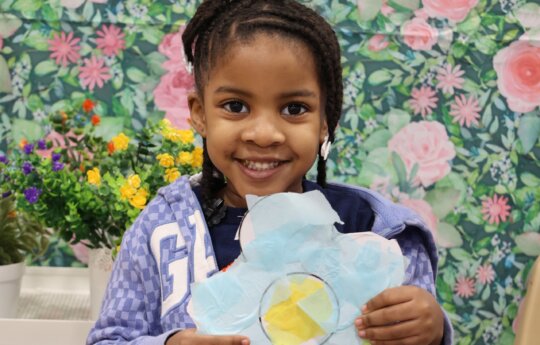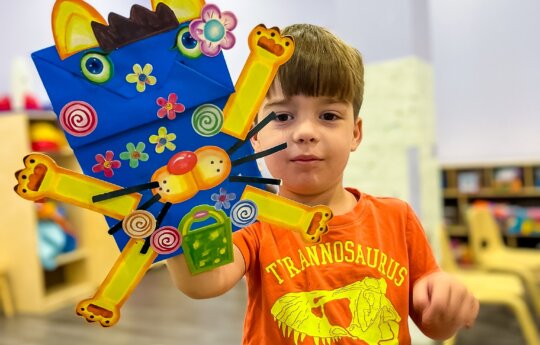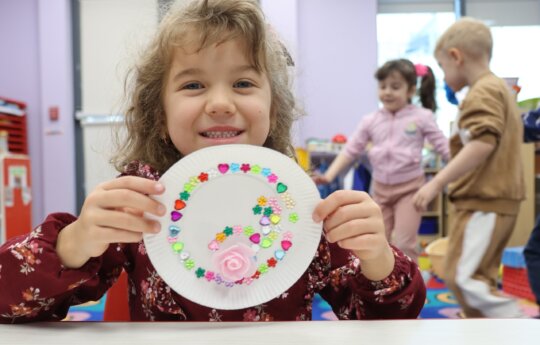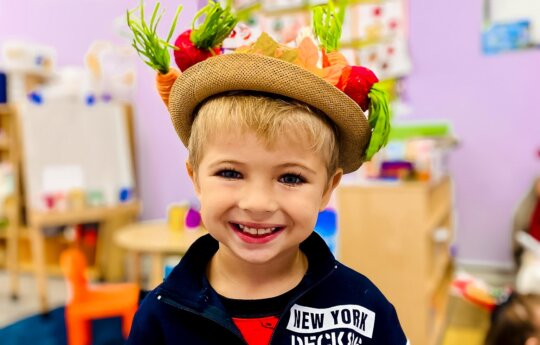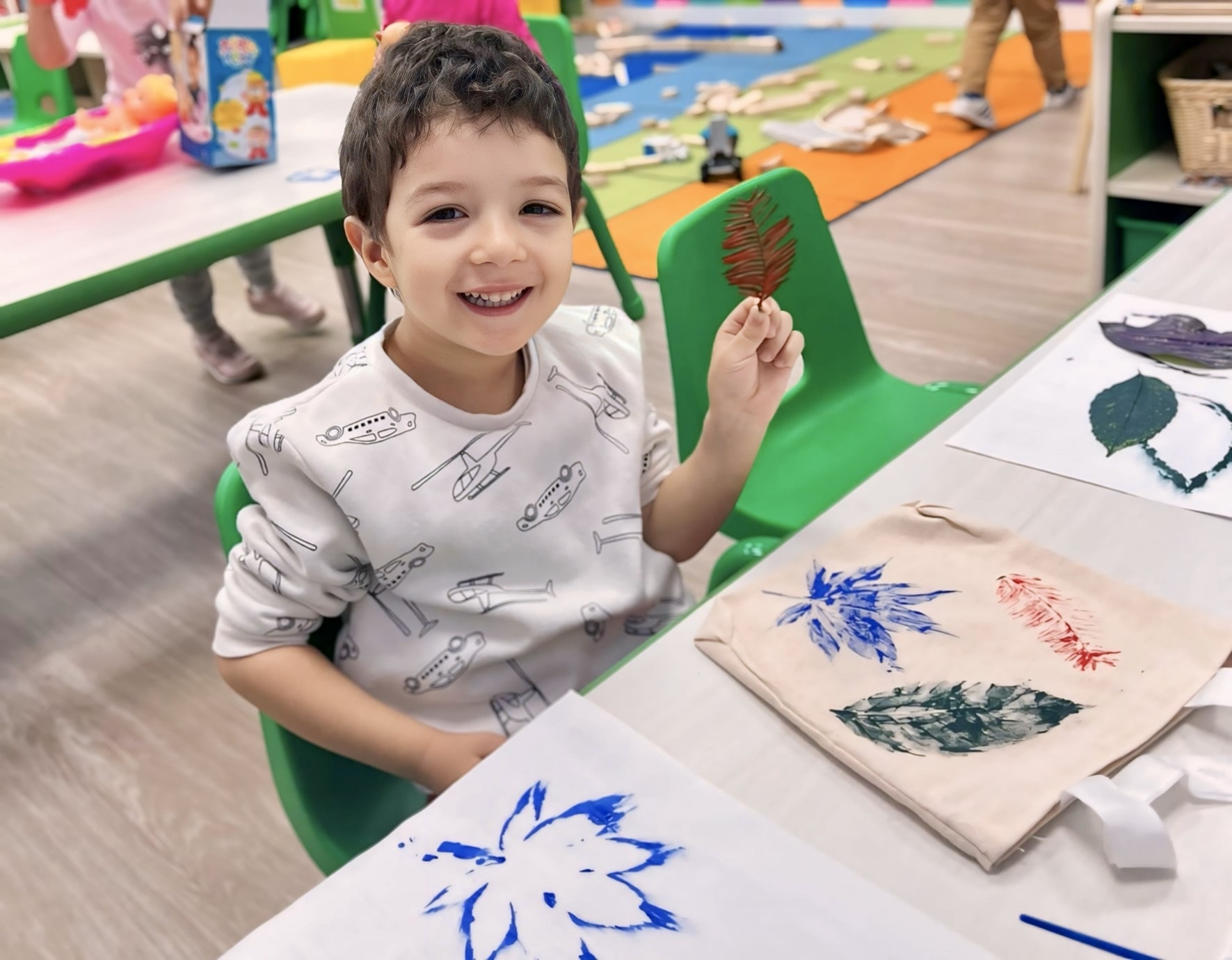
As the gentle breezes of spring usher in the vibrant hues of nature’s renewal, it’s a perfect time to blend Easter’s festive spirit with sustainability principles through eco-friendly crafts. These crafts are not just activities; they celebrate environmental stewardship, utilizing sustainable, recyclable, or biodegradable materials to minimize environmental impact. Eco-friendly crafting teaches children to see the value in materials that are often considered waste and to understand the importance of preserving our planet’s resources.
Engaging in eco-friendly crafts during the spring and Easter season can be a joyful and enlightening experience for children. These activities do more than just fill time; they foster creativity, enhance fine motor skills, and instill a sense of responsibility towards the Earth. By integrating eco-friendly practices into crafting, children learn early in life that their actions can contribute to a larger cause – the well-being of our environment.
Dive into the world of sustainable creativity with our Spring and Easter eco-friendly crafts! Unleash your child’s imagination and teach them the value of environmental stewardship. Start your eco-crafting journey today and inspire a greener future, one craft at a time. Let’s create, learn, and protect our planet together!
Understanding Eco-Friendly Crafts
Eco-friendly crafts are creative projects that utilize materials and processes designed to reduce waste and minimize environmental impact. These crafts emphasize the use of sustainable, recycled, or natural resources instead of new or non-biodegradable materials. By incorporating items like recycled paper, natural dyes, and biodegradable glues, eco-friendly crafting encourages a cycle of reuse and sustainability.
The goal is to create beautiful, functional art pieces while fostering respect for the environment and promoting resource conservation. This approach not only helps reduce the carbon footprint associated with crafting activities but also instills a sense of environmental responsibility and awareness in both children and adults, aligning perfectly with the spirit of renewal and growth that characterizes the spring and Easter seasons.
Importance of using sustainable materials
The use of sustainable materials in crafting is crucial for protecting our environment and ensuring the health of our planet for future generations. Sustainable materials are those that can be grown, harvested, and used without depleting or damaging the natural world, thus maintaining ecological balance.
In the context of Spring and Easter crafts, opting for sustainable materials like organic cotton, bamboo, recycled paper, and natural dyes minimizes the environmental footprint of our creative endeavors. These materials are renewable, require less energy to produce, and often have a lower impact on the earth compared to conventional crafting supplies.
By choosing sustainable options, we teach children the importance of resource conservation and environmental stewardship, reinforcing the message that every action we take, no matter how small, can contribute to a larger positive impact on the world around us. This practice aligns with the themes of renewal and rebirth inherent in the spring and Easter seasons and sets a precedent for responsible and conscious crafting.
Benefits for children and the environment
Engaging children in eco-friendly crafts during the Spring and Easter seasons offers significant benefits for the young creators and the environment. Here are some key advantages:
- Environmental Awareness: Children learn about sustainability and the importance of protecting our planet, fostering a sense of environmental responsibility.
- Creativity and Innovation: Eco-friendly crafting encourages children to think creatively, using non-traditional materials to create something beautiful or functional.
- Resource Conservation: These crafts teach children about resource conservation by utilizing recycled or natural materials. They show them how to create less waste and use resources wisely.
- Enhanced Learning Experience: Working with a variety of materials enhances sensory development and cognitive skills, providing a hands-on learning experience about the natural world.
- Emotional Connection: Crafting with eco-friendly materials can help children develop a deeper connection to the environment, instilling a sense of pride and stewardship for taking care of the Earth.
- Community and Family Bonding: These activities can be shared among family and community members, fostering a collective effort towards sustainability and creating lasting memories.
Overall, eco-friendly Spring and Easter crafts reduce the environmental impact of traditional crafting and enrich children’s learning and development in a fun and engaging way.
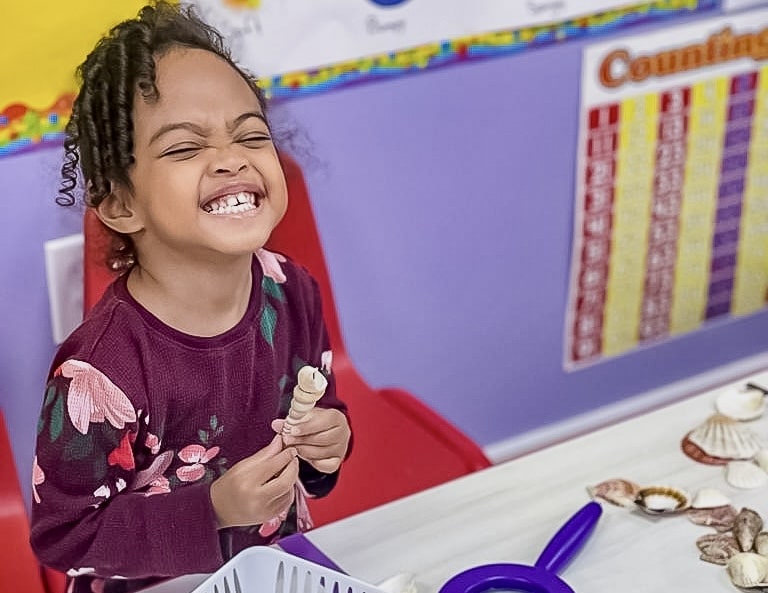
Eco-Friendly Materials and Supplies
In the realm of eco-friendly crafts, especially during Spring and Easter, a variety of sustainable materials can be used to create imaginative and environmentally conscious projects. Here’s a list of some popular options.
List of sustainable materials used in eco-friendly crafts
- Recycled Paper and Cardboard: Ideal for a wide range of crafts, from homemade greeting cards to decorative items.
- Natural Fabrics, such as organic cotton, hemp, or wool, are great for sewing projects or fabric-based crafts.
- Biodegradable Glues and Paints: Non-toxic and safe for children, these materials ensure that crafts are not harmful to the environment after disposal.
- Reclaimed Wood: Perfect for more durable crafts or outdoor projects, promoting the reuse of materials.
- Natural Dyes: Made from plants, vegetables, or fruits, these dyes add color to crafts without the use of chemicals.
- Seeds and Beans: Can be used for creating mosaics, decorations, or even starting a small garden project as part of the craft.
- Recycled Glass or Ceramics: For mosaic art projects, teach children about the art of repurposing.
- Stones, Shells, and Twigs: Collected from nature walks, these materials bring an earthy element to crafts and encourage outdoor exploration.
How to choose eco-friendly paint and other supplies
- Look for Non-Toxic Labels: Ensure the paints and supplies are free from harmful chemicals, which is safer for children and the environment.
- Check for Sustainability Certifications: Products with certifications like EcoLogo or Green Seal meet specific environmental standards in their production and disposal.
- Opt for Water-Based Paints: These are generally less harmful than solvent-based alternatives and are easier to clean, reducing the need for chemical cleaners.
- Select Recycled Content: Choose products made from recycled materials, such as recycled paper for crafting or paint containers made from recycled plastic.
- Prefer Natural Materials: Whenever possible, use natural materials like wool, cotton, or bamboo for fabric crafts, and natural dyes for coloring.
- Reuse and Repurpose: Consider how you can repurpose existing materials or use leftovers from other projects to minimize waste.
- Buy in Bulk: Reduce packaging waste by purchasing commonly used supplies in bulk, but only as much as you can realistically use to avoid waste.
- Research the Company’s Practices: Support companies that are committed to sustainable practices and environmental responsibility.
Tips for sourcing and recycling materials
- Local Thrift Stores and Yard Sales: These can be treasure troves for gently used fabrics, yarn, paper, and other craft supplies.
- Community Recycling Centers are often a great source for finding larger quantities of paper, cardboard, and containers that can be transformed into craft projects.
- Nature Walks: Collect natural materials like leaves, twigs, stones, and shells, which not only provide crafting materials but also encourage outdoor exploration and appreciation of nature.
- Upcycle Household Items: Before disposing of anything, consider if it can be repurposed for crafting. Empty jars, fabric scraps, and old clothing can often be transformed into something new.
- Network with Other Crafters: Joining community groups or online forums can lead to swapping or receiving leftover supplies, reducing waste and fostering a sharing culture.
- Use Eco-Friendly Packaging as Supplies: Packaging materials like cardboard boxes, paper padding, or biodegradable peanuts can be reused in a variety of crafts.
- Educate on Proper Recycling Practices: Understanding what can and cannot be recycled in your area can prevent contamination and ensure that recyclable materials are properly processed.
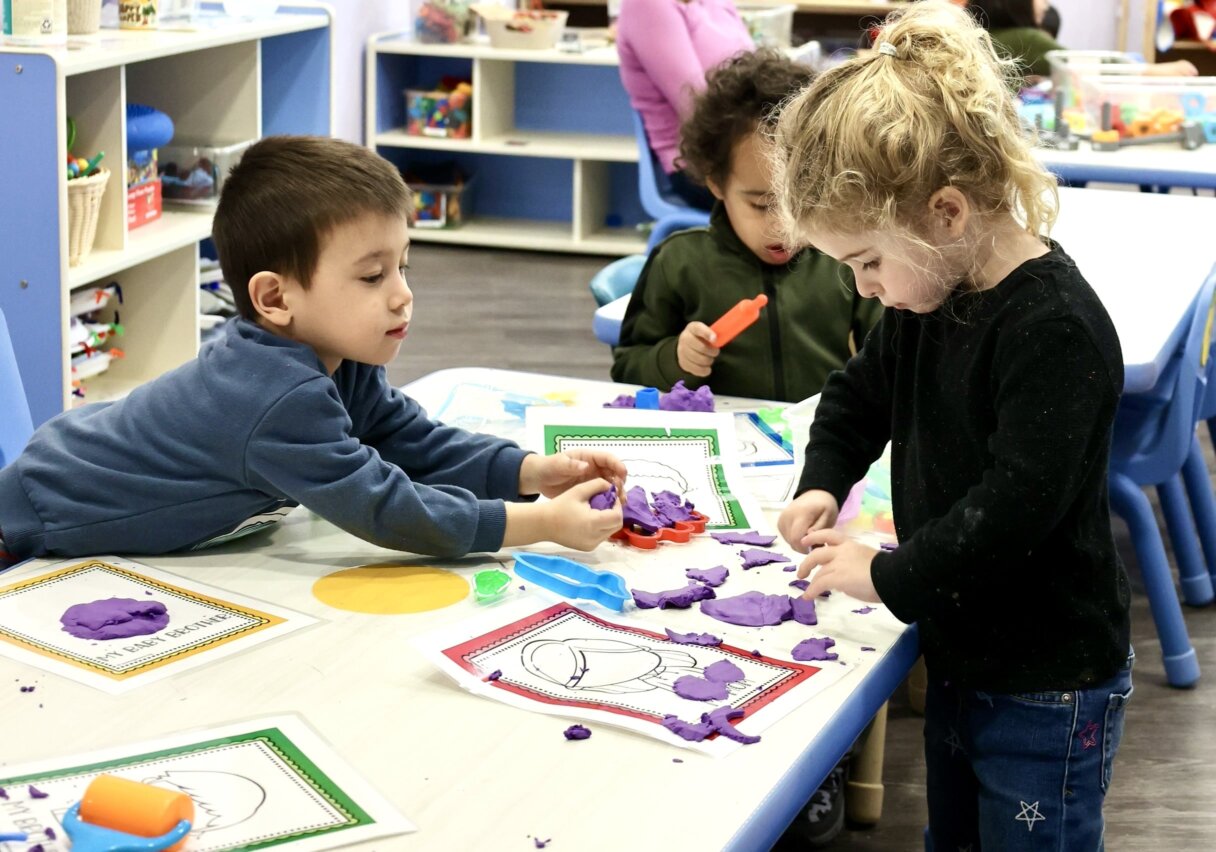
Eco-Friendly Crafts for Kids
1. Egg Carton Seed Starters
Materials: Egg carton, potting soil, seeds, water
Steps:
- Cut the egg carton into individual cups.
- Fill each cup with potting soil.
- Plant a few seeds in each cup and lightly water them.
- Place in a sunny spot and water regularly until seedlings sprout.
2. Toilet Paper Roll Bird Feeder
Materials: Toilet paper roll, peanut butter, bird seed, string
Steps:
- Spread peanut butter all over the outside of the toilet paper roll.
- Roll the peanut butter-coated tube in bird seed until fully covered.
- Thread string through the roll and tie a knot to hang from a tree.
3. Nature Collage
Materials: Cardboard or heavy paper, glue, collected natural items (leaves, petals, twigs)
Steps:
- Go on a nature walk to collect various natural items.
- Arrange your collected items on the cardboard or paper.
- Glue each item down to create a nature collage.
- Allow to dry before displaying.
4. Recycled Bottle Planter
Materials: Plastic bottle, scissors, soil, seeds or small plant, paint (optional)
Steps:
- Cut the top third off a plastic bottle.
- Decorate the outside with paint if desired and let dry.
- Fill the bottom part with soil and plant seeds or a small plant.
- Water as needed and place in a sunny location.
5. Fabric Scrap Wrapping Paper
Materials: Fabric scraps, glue, plain paper
Steps:
- Cut fabric scraps into shapes or strips.
- Arrange the fabric pieces on the plain paper to create a pattern.
- Glue each piece down and let dry.
- Use this personalized wrapping paper for gifts or as a decorative piece.
6. Paper Mache Bowls
Materials: Recycled paper/newspaper, glue, water, bowl for mold, paint
Steps:
- Tear the paper into strips.
- Mix glue with water to create a paste.
- Dip paper strips into the paste and layer over an upside-down bowl.
- Once fully covered, allow to dry, then paint and decorate.
7. Tin Can Wind Chimes
Materials: Tin cans, string, beads, paint, hammer, nail
Steps:
- Paint and decorate the tin cans.
- Use a hammer and nail to make a hole in the bottom of each can.
- Thread string through the hole and add beads for decoration.
- Hang the cans in sequence to create wind chimes.
8. Cardboard Tube Animals
Materials: Toilet paper rolls, paint, googly eyes, construction paper
Steps:
- Paint the toilet paper rolls in colors of chosen animals.
- Cut and glue construction paper to create ears, wings, or feet.
- Add googly eyes and other details to complete the animal figures.
9. Recycled Glass Jar Lanterns
Materials: Glass jars, colored tissue paper, glue, tea lights
Steps:
- Cut the tissue paper into shapes or strips.
- Glue the tissue paper onto the outside of the jar.
- Place a tea light inside to create a colorful lantern.
10. Button Bracelets
Materials: Elastic thread, assorted buttons
Steps:
- Cut a length of elastic thread that fits around the wrist.
- Thread buttons onto the elastic, mixing colors and sizes.
- Tie the ends securely to create a bracelet.

DIY Eco-Friendly Crafts for Daycare
1. Homemade Natural Clay
Materials: Flour, salt, water, vegetable oil, natural food coloring
Steps:
- Mix flour, salt, water, and a bit of vegetable oil to create a clay-like consistency.
- Divide the clay and add different natural food colorings to each portion.
- Let children model and create shapes, then air dry the creations.
2. Plant-Based Finger Paints
Materials: Cornstarch, water, natural food coloring or vegetable dyes
Steps:
- Mix cornstarch with water over heat until it thickens.
- Divide into containers and mix with different natural colors.
- Allow children to paint with their fingers, using the mixture on paper or fabric.
3. Recycled Fabric Quilts
Materials: Old clothes or fabric scraps, scissors, needle and thread or fabric glue
Steps:
- Cut fabrics into squares or shapes.
- Arrange in a pattern and either sew together or use fabric glue for a no-sew option.
- Create quilts or wall hangings, involving children in layout and assembly.
4. Eco-Friendly Glitter
Materials: Salt or sugar, food coloring, baking sheet
Steps:
- Mix salt or sugar with food coloring until desired shade is achieved.
- Spread on a baking sheet and bake at a low temperature until dry.
- Use in place of traditional glitter for crafting and decorating.
5. Reusable Cloth Wraps
Materials: Fabric scraps, beeswax, oven, baking sheet
Steps:
- Cut fabric into desired sizes.
- Grate beeswax and sprinkle evenly over fabric on a baking sheet.
- Melt beeswax in the oven and spread to coat the fabric.
- Let cool to create reusable wraps for food, crafts, or as eco-friendly gift wrap.
Involving children in making their own eco-friendly art supplies not only enhances their crafting experience but also teaches them about sustainable living and the importance of reducing waste. These activities encourage creativity, resourcefulness, and environmental stewardship in a fun and interactive way.
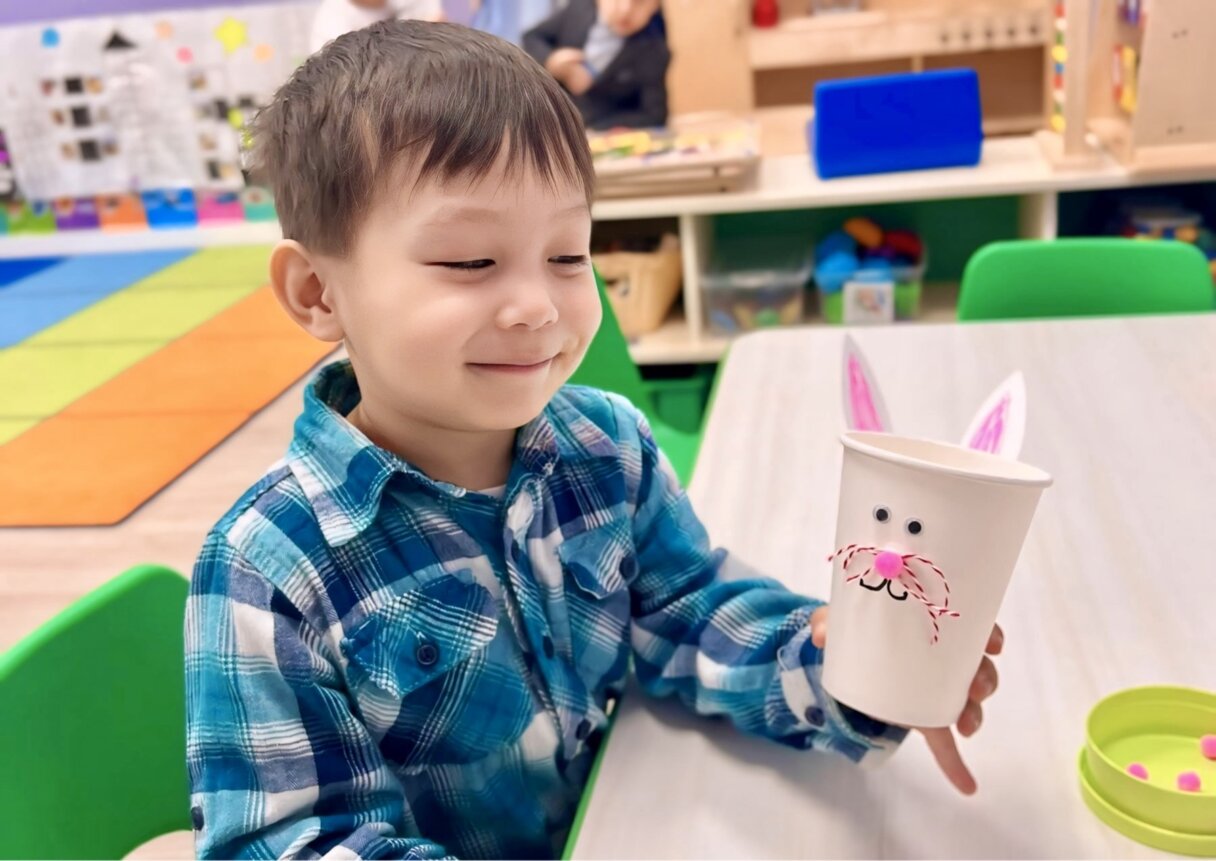
Seasonal Eco-Friendly Crafts
Easter Eco-Friendly Crafts
1. Natural Dye Easter Eggs
Materials: Hard-boiled eggs, natural dyes (beets, turmeric, blueberries), vinegar, pots
Steps:
- Prepare natural dyes by boiling each dye material (like beets for red, turmeric for yellow) in separate pots with water and a bit of vinegar.
- Simmer until the water takes on a strong color, then cool.
- Submerge hard-boiled eggs in the dye, leaving them for a few hours or overnight for deeper colors.
- Remove and let dry for beautifully dyed Easter eggs.
2. Bunny Planters from Recycled Bottles
Materials: Plastic bottles, scissors, paint, markers
Steps:
- Cut the bottom third of a plastic bottle to use as the planter.
- Paint the outside to resemble a bunny, adding features like ears, eyes, and nose with markers.
- Fill with soil and plant seeds or a small flower to complete the bunny planter.
3. Eco-Friendly Easter Baskets
Materials: Cardboard boxes, recycled fabric or paper, glue, decorations
Steps:
- Take a small cardboard box and shape it into a basket form.
- Cover and decorate with recycled fabric or paper.
- Add handles made from braided strips of fabric or strong paper.
- Fill with eco-friendly treats or homemade crafts for a personalized Easter basket.
4. Fabric Scrap Easter Garland
Materials: Fabric scraps, string, needle or glue
Steps:
- Cut fabric scraps into shapes like eggs, bunnies, or flowers.
- Attach the shapes to a long string using a needle and thread or fabric glue to create a festive garland.
- Hang the garland as a colorful Easter decoration.
5. Seed Paper Easter Cards
Materials: Recycled paper, water, seeds, blender, screen or mesh
Steps:
- Blend recycled paper with water to create a pulp.
- Mix in seeds that can grow when planted (like wildflower seeds).
- Spread the pulp evenly on a screen or mesh to dry, forming sheets.
- Cut into card shapes and decorate with Easter messages.
Creative Eco-Friendly Crafts
1. Eco-Friendly Fashion Design
Materials: Old clothes, fabric scraps, sewing machine, natural dyes
Steps:
- Design a new piece of clothing by sketching ideas.
- Select old clothes and fabric scraps that fit the design.
- Dye fabrics naturally if needed, then cut and sew them together to create the new garment.
- Embellish with eco-friendly materials like wooden buttons or hemp thread.
2. Recycled Material Sculpture
Materials: Assorted recycled materials (plastic bottles, cardboard, etc.), strong adhesive, paint
Steps:
- Plan a sculpture, considering the size and structure based on available materials.
- Clean and prepare the materials, cutting them into necessary shapes and sizes.
- Assemble the sculpture using adhesive, creating a stable base and building up.
- Once assembled and dry, paint and finish the sculpture to enhance its appearance.
3. Handcrafted Wooden Toys
Materials: Reclaimed wood, woodworking tools, non-toxic finishes
Steps:
- Design the toy, considering the functionality and safety.
- Cut and shape the reclaimed wood according to the design.
- Sand the pieces smooth and assemble using non-toxic glue or joinery techniques.
- Apply a non-toxic finish to protect the wood and enhance its natural beauty.
4. Upcycled Glass Art
Materials: Old glass bottles, glass cutter, sanding paper, glass paint
Steps:
- Cut glass bottles into desired shapes or panels using a glass cutter.
- Sand the edges to smooth them and prevent injury.
- Paint the glass pieces with glass paint to create colorful designs.
- Assemble the pieces into a stained glass window or decorative item.
5. Advanced Paper Engineering
Materials: Recycled paper, cardstock, cutting tools, adhesives
Steps:
- Design a complex paper structure, like a pop-up card or a kinetic sculpture.
- Cut and fold recycled paper and cardstock according to the design specifications.
- Carefully assemble the pieces, using adhesives where necessary.
- Test the mechanism or structure to ensure proper function and make adjustments as needed.
These advanced eco-friendly projects require a higher level of skill and creativity, offering a challenge that can enhance problem-solving abilities and encourage innovative thinking in crafting.
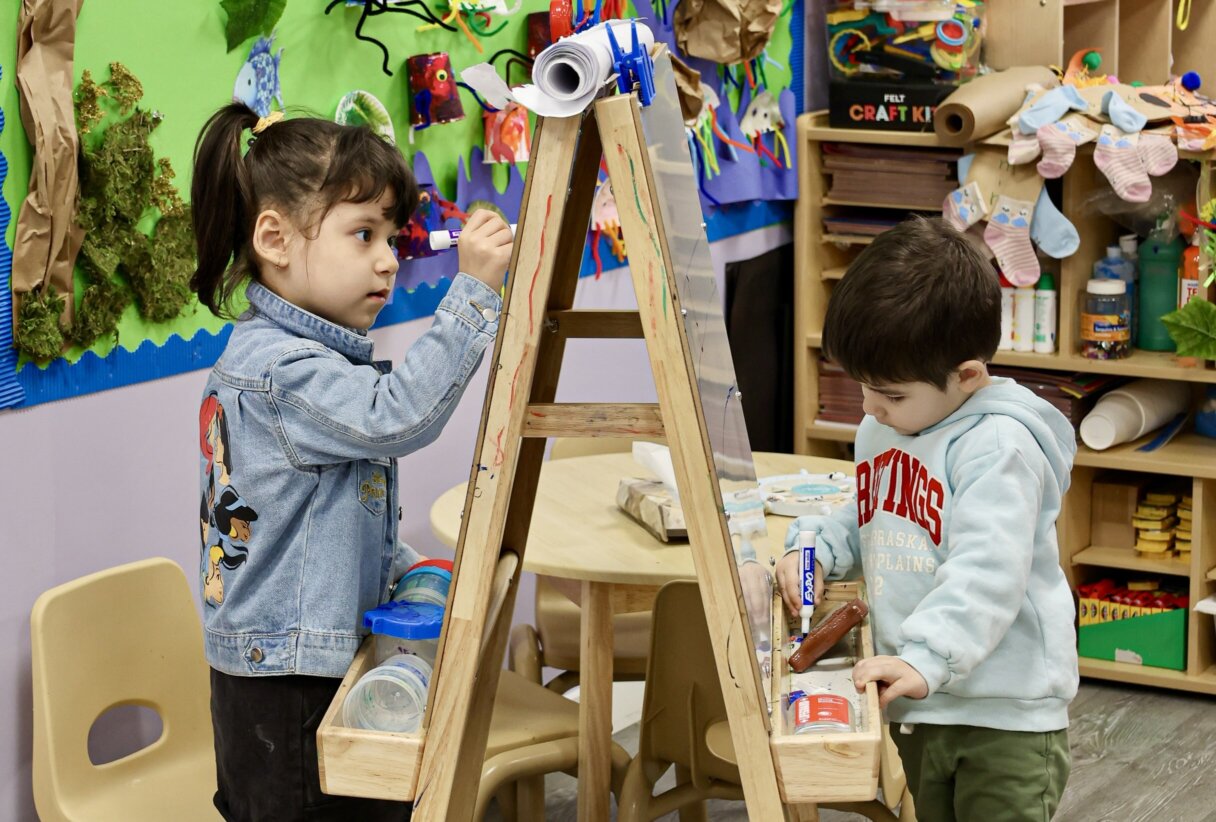
Safety considerations in DIY crafts
When conducting DIY crafts with preschoolers, safety is paramount. Here are key considerations to ensure a safe crafting environment:
- Non-Toxic Materials: Use only non-toxic, child-safe materials and supplies. Preschoolers often explore with their mouths, so everything should be safe if ingested accidentally.
- Supervision: Always supervise preschoolers closely during craft activities. Even with safe materials, young children need guidance to use them properly and avoid accidents.
- Age-Appropriate Tools: Provide tools appropriate for their age and skill level, such as blunt scissors, large paintbrushes, and thick pencils or crayons, to prevent frustration and injury.
- Safe Environment: Ensure the crafting area is well-organized and free of hazards. Work on surfaces at the right height for children, and keep the space clear of sharp objects and choking hazards.
- Avoid Small Parts: Be cautious with materials that could be choking hazards. Avoid small beads, buttons, or any tiny objects that children might swallow.
- Clear Instructions: Give clear, simple instructions and demonstrate each step. Preschoolers have limited attention spans and may need to see actions repeated several times.
- Allergy Awareness: Be aware of any allergies (such as to food items used in crafts or latex gloves) and avoid materials that could trigger allergic reactions.
- Dress Appropriately: Use smocks or old clothes for messy activities to prevent distress over ruined clothing. This also helps to create a more relaxed crafting environment.
- Encourage Safe Use of Materials: Teach children the proper way to use crafting materials and tools, like cutting away from their body with scissors or not running with sharp objects.
- First Aid and Emergency Preparedness: Have a first aid kit nearby and be prepared to handle minor injuries. Ensure all adults present know basic first aid and emergency procedures.
Considering these safety aspects, you can create a nurturing environment where preschoolers can explore their creativity through DIY crafts while minimizing risks.
Conclusion
In conclusion, eco-friendly crafts offer a myriad of benefits, from fostering environmental awareness and creativity in children to promoting the sustainable use of resources. Engaging in these activities provides enriching experiences for our young learners and contributes to our planet’s health. As we celebrate spring’s renewal and Easter’s joy, let us continue to explore and create with sustainable materials. This journey of eco-conscious crafting is not just about making art; it’s about instilling values that will encourage the next generation to live in harmony with the environment.
Let’s embrace this opportunity to craft a greener future, one eco-friendly project at a time.
Join us at Little Scholars Daycare for a journey of discovery and learning through eco-friendly crafts! Enroll your little one today and let’s nurture their creativity while fostering a love for our planet. Together, we can craft a brighter future for our scholars!

